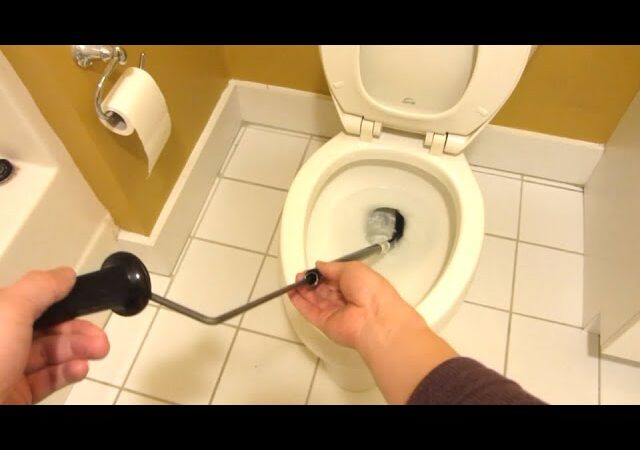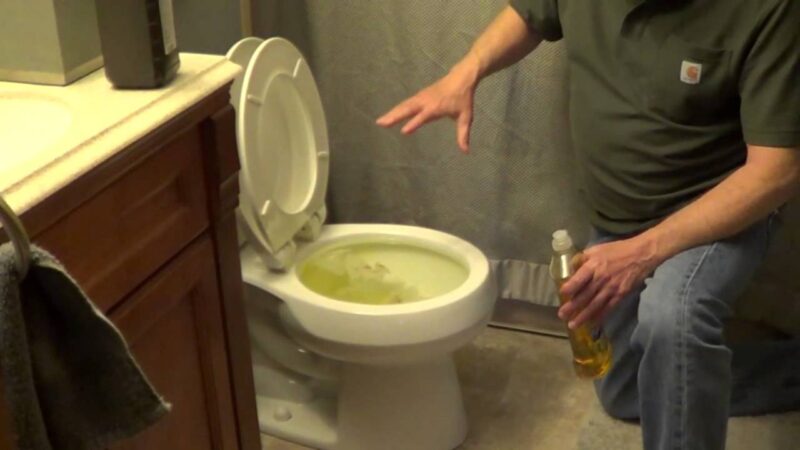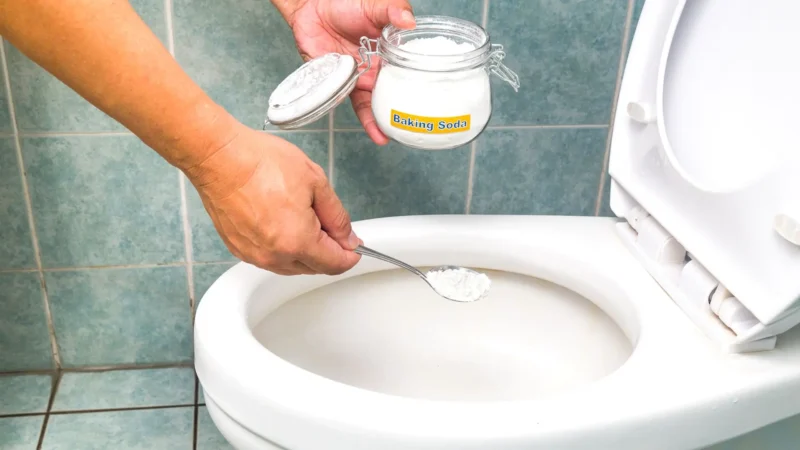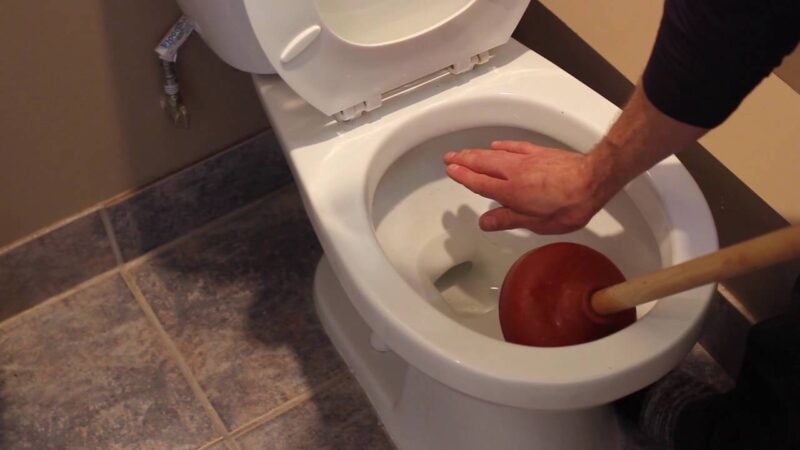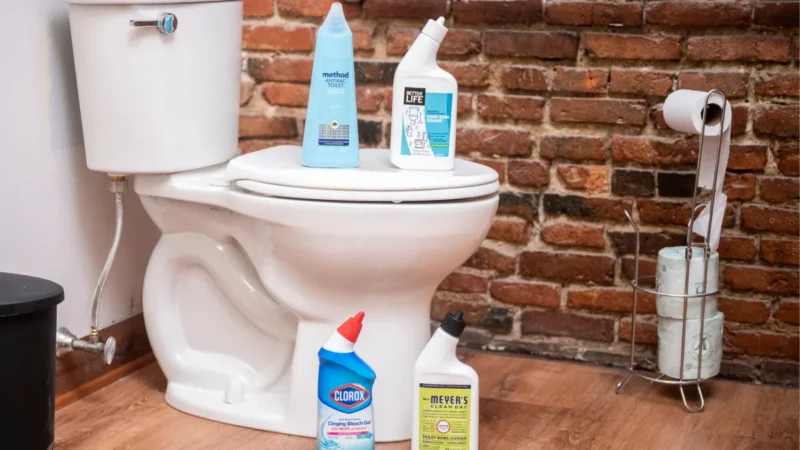Why Japanese Toilets Are the Best: The Evolution of Japanese Toilets
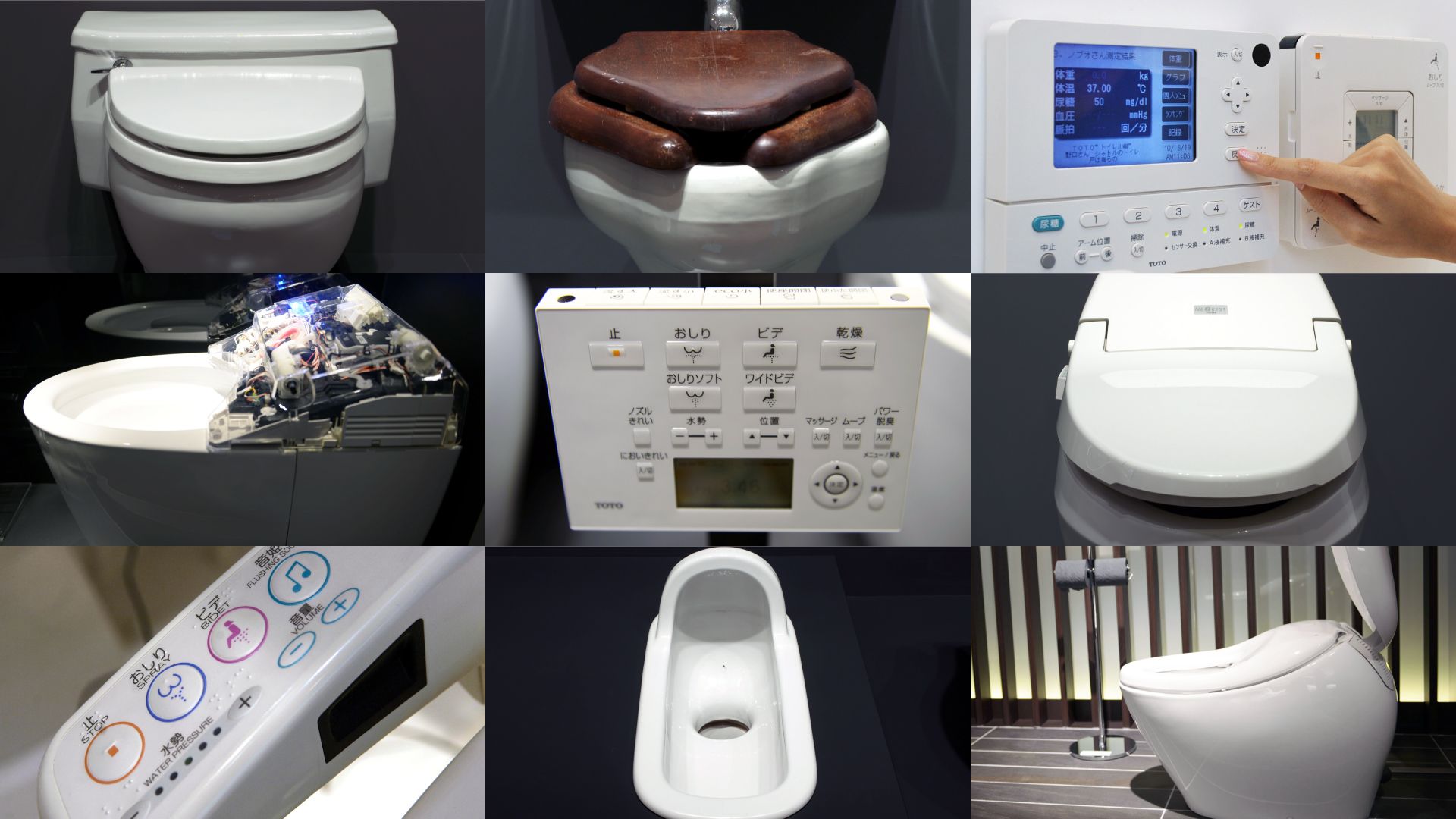
Japanese toilets, often called “smart toilets,” are famous for their high-tech features that make using the bathroom a comfortable and hygienic experience. These toilets come with many features, such as bidet functions with adjustable water temperature and pressure, heated seats, automatic lids, and deodorizing systems. Some even play music to ensure privacy.
These toilets originated in Japan and showcase the country’s dedication to cleanliness and technology. The focus on user comfort and eco-friendly designs, like water-saving features, has made them popular worldwide. They set a new standard for bathroom fixtures and continue to evolve with new, sophisticated features.
In short, Japanese toilets offer a luxurious and futuristic way to take care of personal hygiene.
What is a Japanese toilet?
When you visit Japan, one of the coolest things you’ll find is the modern “smart” toilets. Over a third of Japanese homes have these advanced toilets, often called “washlets.” These toilets have amazing features, like a water jet that cleans you, which can make toilet paper seem unnecessary. After using these high-tech toilets, you might wonder why other countries haven’t adopted this technology.
The big innovation in Japanese toilets is the seat. These electric seats can spray water to clean your bottom or female areas, and you can control this with a panel near or on the seat.
Besides the water spray, these seats can have many features, such as heated seats, dryers, motion sensors to open the lid when someone enters, and adjustable water pressure. There’s a function for almost everything you can think of.
If the power goes out and the electric features stop working, you can still use the toilet like a traditional one with toilet paper and manual flush. You don’t have to use all the features, but once you try them, you’ll probably love them. Many people still use some toilet paper, especially for drying.
History of Japanese Toilets
The history of Japanese toilets is really interesting. It all began in 1903 when Kazuchika Okura, a Japanese inventor, visited Europe. He was impressed by the clean, white ceramic toilet bowls he saw and wanted to bring this modern convenience to Japan. At that time, Japanese bathrooms mostly had basic squat toilets without a sewage system.
In 1914, Okura introduced Japan’s first Western-style flush toilets. By 1917, he had founded the Toyo Toki Company, which later became known as TOTO in 1970. Over the years, TOTO became well-known for making high-quality toilets, but their big innovation came in the late 20th century.
In 1980, TOTO created the washlet, a special toilet seat that combined the functions of a bidet with an electric toilet seat. The washlet was priced at 149,000 yen (about 600 euros at the time) and could be attached to existing toilets, making it easy to use.
TOTO’s engineers worked hard to perfect the washlet. They made sure the water temperature was always comfortable and found the best angle for the water spray, called the “golden angle” of 43 degrees. This attention to detail made the washlet stand out from other products.
At first, the washlet became popular among high-end clients, especially in golf courses and with businessmen. Today, you can find TOTO washlets in fancy places like the five-star Shangri-La Hotel in London, on Boeing 777 business class flights, and even in the Louvre Museum in Paris.
The story of Japanese toilets shows how a mix of cultural appreciation and technology can create products that change everyday life. Japanese toilets have set a new standard for bathroom fixtures, offering a glimpse into the future of personal hygiene.
How To Use A Japanese Toilet?
- Approach: The lid may open automatically. If not, lift it manually.
- Sit: Sit down on the heated seat.
- Clean: Use the bidet (front) or rear wash buttons. Adjust water pressure and nozzle position.
- Dry: Press the dryer button to dry yourself.
- Flush: The toilet may flush automatically. If not, press the flush button.
- Close: The lid may close automatically. If not, use the lid control button.
Tips
- Read the labels on the buttons.
- Use the remote if available.
- Don’t confuse the flush button with the sound simulator button.
Features of Japanese Toilets
Bidet
One of the best features of Japanese toilets is the bidet. It’s an automatic stream of water that cleans you. A nozzle comes out from under the toilet seat and sprays water to clean your bottom. Some toilets even have an extra nozzle for women. You can control the water pressure, nozzle position, and sometimes the water temperature with the controls. Many people find it much cleaner than using toilet paper.
Heated Seat
A loved feature is the heated seat, which keeps you warm on cold mornings. This is especially great for homes that aren’t well-heated or insulated. Most toilets have a switch to turn off the heated seat in warmer months to save energy. Some toilets have a smart sensor that heats the seat when you usually use the toilet.
Dryer
Another great feature is the dryer function. After washing, you can dry yourself with a gentle breeze by pressing a button. This helps save on toilet paper.
Automatic Lid
Modern Japanese toilets often have an automatic lid that opens when you approach and closes when you’re done. This adds convenience and keeps things clean.
Noise Maker
For privacy, Japanese toilets often include a feature called Otohime, or Sound Princess. With a simple hand wave, you can create ambient noise, like white noise or classical music, to mask any sounds and keep things private.
Adjustable Water Temperature
Most Japanese toilets use warm water for cleaning, and you can adjust the temperature. Cheaper models heat a tank of water that can run out, but high-end models offer continuous heating.
Adjustable Water Pressure
You can also adjust the water pressure of the cleaning jet. The backwash is usually stronger than the front wash, and many models have separate pressure controls.
Different Types of Japanese Toilets
Japanese Toilet Block
This type of toilet has all the advanced features built into the ceramic bowl, which can be placed on the floor or hung on the wall. To install it, you’ll need to replace your current toilet and hire a plumber. This makes it more expensive, costing between 2000 and 10000 euros. Despite the cost, you get all the advanced functions of a Japanese toilet.
Japanese Toilet Seat
If you don’t want to replace your entire toilet because of budget or the amount of work required, you can choose a Japanese toilet seat. This seat can be added to your existing toilet and comes with features like a built-in bidet. Prices vary a lot, but it’s hard to find one for less than 200 euros.
Japanese Hand Shower Kit
The cheapest option is the Japanese hand shower kit. It fits between the toilet bowl and the lid and doesn’t need a plumber. This kit offers basic features like one or two water jets with adjustable temperature and pressure. Some models even include a warm air dryer. You can find these kits for less than 100 euros.
Japanese Bidet Attachment
A budget-friendly choice is the Japanese bidet attachment. It connects to your existing toilet and provides a basic water spray for cleaning. You can control the water pressure and temperature. It’s easy to install and doesn’t need a plumber.
Portable Japanese Bidet
For those who travel a lot or want a bidet on the go, a portable Japanese bidet is a good option. This handheld device offers the same cleaning experience anywhere. It’s battery-operated and can be filled with water.
High-Tech Japanese Toilet Systems
The most advanced option is high-tech Japanese toilet systems. These toilets have many features like automatic lid opening and closing, heated seats, adjustable water temperature and pressure, built-in deodorizers, air dryers, and even music or ambient noise for privacy. They are more expensive and need professional installation.
The Traditional Japanese Toilet – Squat Style
Traditional Japanese toilets, known as washiki toire, require users to squat over the urinal. These toilets are rarely seen in modern homes today. You will mostly encounter them in public restrooms, tourist spots, and older buildings. The squat-style toilet is a remnant of historical sanitation practices and still serves a purpose in certain public and historical settings.
Advantages And Disadvantages of Japanese Toilets
| Advantages | Disadvantages |
|---|---|
| Automation: The lid opens and flushes automatically, improving comfort and hygiene. | Price: Japanese toilets can be expensive, with full-featured models costing between €1500 and €2000, excluding installation. |
| Personal Hygiene: Spray arms provide gentle, hygienic cleaning, reducing the need for toilet paper. | Power Supply: Requires electricity to operate, so a power outlet must be near the toilet. Installation might add to the cost. |
| Comfort: Features like air drying, heated seats, and wash jets enhance the bathroom experience. | Complex Installation: The installation process can be complex and might require professional help, adding to the overall cost. |
| Personalization: Settings can be customized using a remote control or mobile phone app. | Water Use: Some models may use more water for features like bidets and flush, which can lead to higher water bills. |
| Reduced Maintenance: Special coatings prevent stains, making cleaning easier. | |
| Multifunctional: Combines the functions of a toilet and a bidet in one unit, saving space. |
Pricing and Models of Japanese Toilets
Japanese toilets are known for their advanced features and luxurious experience, but they often come with a high price tag. In places like France, they are still seen as luxury items rather than everyday hygiene fixtures. Here’s a look at the different types of models and their price ranges:
| Model Type | Features | Price Range |
|---|---|---|
| Entry-level Japanese Toilets | Include features such as drying, adjustable water pressure, and temperature control | Starting at €1,500 |
| Mid-range Japanese Toilets | Offer extras like heated seats, air drying, and customizable settings | €2,500 – €5,000 |
| High-end Japanese Toilets | Come with advanced functions like automatic lid opening, built-in music, ambient noise, and deodorizers | €5,000 – €20,000+ |
| Japanese Toilet Seats | Attach to existing toilets; provide basic bidet functions with adjustable settings | Starting at €200 |
Budget-Friendly Options
Japanese Toilet Seats: If you want the benefits of a Japanese toilet without the full replacement cost, Japanese toilet seats are a good option. These seats can be added to your existing toilet, offering features like a built-in bidet, adjustable water pressure, and temperature control. Prices start around €200, making it more affordable.
Entry-Level Models
Entry-Level Japanese Toilets: These models provide essential features such as drying, adjustable water pressure, and water temperature control. Priced starting at €1,500, they are a step up from basic models but still relatively affordable compared to higher-end versions.
Mid-Range Models
Mid-Range Japanese Toilets: For more luxury, mid-range models include additional features like heated seats, air drying, and customizable settings. These models range from €2,500 to €5,000, offering a balance of advanced features and affordability.
High-End Models
High-End Japanese Toilets: The most luxurious option, high-end models come with all the bells and whistles. These include automatic lid opening and closing, built-in music, ambient noise, deodorizers, and more. Prices for these models start at €5,000 and can go beyond €20,000, reflecting the high level of comfort and technology.
Different Types Of Buttons on Japanese Toilets And How To Read Them?
Japanese toilets, or washlets, are equipped with a variety of buttons that control their many high-tech features. Understanding these buttons and their functions can enhance your bathroom experience. Here’s a guide to the types of buttons you might find and how to read them:
Types of Buttons on Japanese Toilets
Bidet and Rear Wash
- Bidet Button: Often marked with a female symbol or the word “Bidet”. This button activates a water spray for cleaning the front.
- Rear Wash Button: Typically marked with a buttocks symbol or the word “Rear”. This button activates a water spray for cleaning the rear.
Heated Seat
- Heated Seat Button: Usually marked with a seat icon and wavy lines or the word “Heat”. This button turns the heated seat feature on or off. Some models allow you to adjust the temperature.
Dryer
- Dryer Button: Marked with a fan or airflow symbol. This button activates the air dryer, which dries you off after using the bidet or rear wash.
Flush
- Flush Button: Commonly marked with a flush or water droplet symbol. Some models have separate buttons for different flush strengths, like full flush (大) and half flush (小).
Lid Control
- Lid Open/Close Button: Marked with an open or close lid icon. These buttons open and close the toilet lid automatically.
Noise Maker (Otohime or Sound Princess)
- Noise Maker Button: Often marked with a musical note or sound icon. This button generates ambient noise, like white noise or music, to mask natural sounds.
Water Temperature Control
- Temperature Control Buttons: Typically marked with a thermometer icon. These buttons allow you to adjust the water temperature for the bidet and rear wash functions.
Nozzle Position
- Nozzle Position Buttons: Marked with directional arrows or a nozzle icon. These buttons let you adjust the position of the cleaning nozzle.
Pressure Control
- Pressure Control Buttons: Often marked with water droplets of varying sizes. These buttons adjust the water pressure for the bidet and rear wash functions.
Power Saving Mode
- Power Saving Button: Marked with a leaf or energy-saving symbol. This button activates a power-saving mode to reduce energy consumption when the toilet is not in use.
Remote Control
- Remote Control: Some high-end models come with a remote control that allows you to operate all the features without touching the toilet. The remote often has labelled buttons for each function.
How to Read the Buttons
Symbols and Icons
Most buttons have clear symbols or icons, like a buttocks symbol for the rear wash or a fan for the dryer. These visual cues help you understand the function even if you don’t read Japanese.
Text Labels
Many buttons also have text labels in Japanese, and sometimes in English. Common words include:
- おしり (Oshiri): Rear
- ビデ (Bide): Bidet
- 停止 (Teishi): Stop
- 乾燥 (Kansō): Dry
- 便器洗浄 (Benki Senjō): Toilet Cleaning
- 温水 (Onsui): Warm Water
- 脱臭 (Dasshū): Deodorizer
Special Features of Japanese Toilets
Emergency Call Button
Some Japanese toilets have an emergency call button next to the flush button. This button is for people with disabilities or those who might feel sick while using the toilet. When you press it, it calls for help. The button often says “yobidashi” and should only be used in real emergencies to avoid false alarms.
Flushing Sound Simulator
To keep things private and cover up bathroom noises, many Japanese toilets have a sound simulator that mimics the sound of flushing water. Sometimes this sound starts automatically when someone enters the bathroom, while other times you need to press a button to start it. This button can look similar to the flush button, so be careful not to mix them up.
Important Considerations Before Buying a Japanese Toilet
- Electrical Supply: Ensure there’s an electrical outlet within 1.5 meters of where you plan to install the toilet. This is crucial for powering the toilet’s features.
- Water Pressure: Verify that your home has adequate water pressure to support the toilet’s functions, such as the bidet and wash features.
- Anti-Bacterial Nozzles: Choose a toilet with nozzles made from anti-bacterial materials to ensure optimal hygiene.
- Safety Standards: Look for a Japanese toilet that meets the NF standard, guaranteeing the safety of electrical appliances in the bathroom.
- Professional Installation: Even if you’re handy, it’s best to have the toilet installed by a professional or an installer recommended by the manufacturer. This ensures proper setup and operation.
Recommendation
The Importance and Versatility of Toilet Paper Holders
How to Install a Toilet Paper Holder
Flush Valve Seal Replacement: A Simple Guide to Fixing a Running Toilet
How to Replace a Toilet Flapper: A Simple Guide to Fixing Leaks and Saving Water
Conclusion
In conclusion, Japanese toilets have redefined bathroom experiences with their advanced technology, comfort, and hygiene-focused features. From bidet functions and heated seats to automatic lids and air dryers, these smart toilets offer unparalleled convenience. Their evolution from traditional designs to high-tech innovations reflects Japan’s commitment to cleanliness and efficiency. As they continue to gain popularity worldwide, Japanese toilets set a new standard for modern hygiene, making them a valuable investment for those seeking a more comfortable and eco-friendly bathroom solution.
FAQs
Q: Is it OK to flush toilet paper in Japan?
A: In most cities and towns in Japan, it’s okay to flush toilet paper. Japanese toilets are built to handle it, and you’ll usually see signs saying it’s fine. But in older or rural places, especially public toilets, you might see signs asking you not to flush toilet paper because the plumbing can’t handle it. In these spots, there will be a bin for used toilet paper. Always follow the signs in each bathroom to avoid problems.
Q: What is special about Japanese toilets?
A: A Japanese toilet has many smart features. It can offer heated wash jets, warm seats, massage settings, play music, lift the lid automatically, and even clean itself.
Q: Do you need to wipe with a Japanese toilet?
A: The bidet sprays water to clean you thoroughly, so you don’t need to use toilet paper first.
Q: Is it worth buying a Japanese toilet?
A: Yes, buying a Japanese toilet is worth it. It enhances hygiene with bidet functions, adds comfort with heated seats and air dryers, offers health benefits by preventing irritation, includes advanced features like automatic lid opening and deodorizing, and is eco-friendly by reducing toilet paper usage. Despite the high initial cost, the long-term benefits in terms of comfort, hygiene, and health make it a great investment.
Q: How do Japanese toilets help improve personal hygiene and reduce the risk of infections?
A: Japanese toilets have health benefits. Bidets clean you with water instead of wiping, which helps remove bacteria. This can prevent inflammation, infections, and discomfort. Using a bidet also lowers the risk of bacterial prostatitis, a condition affecting about 8% of men.

